
Producers and traders may remember the surprise we got 9 years ago during the corn crop harvest.
Yields across the central and especially the Southern Cornbelt came in as much as 20 bushels/acre less than expected/predicted in the warmest locations.
It was hot and wet during the Summer of 2010. Crop ratings stayed very high because of all the rains. The corn plants all looked great from the outside. The market was trading a near record crop. But the heat caused accelerated maturity..........heat fill.
When they actually got into the corn, instead of plump kernels, they found small kernels.
The hotter it is, the faster the corn plant matures(accumulates heat units or growing degree days). The faster it matures, the less time it has to fill the kernels. Less time filling, means less filling and smaller kernels.........period.
It's an irrefutable law of agronomy that can't be offset by any amount of rain or other factors.
The heat won't hurt the beans but it WILL reduce production for corn from wherever it is right now in those areas that average 5+ degrees above normal (for more than just a few days) because kernels will be smaller.......kernel weight lower. The longer the heat lasts, the greater the effect.
Conversely, cool temperatures do the opposite and maximize yields.
https://www.pioneer.com/us/agronomy/high-night-temps-yield.html
2010 Growing Season
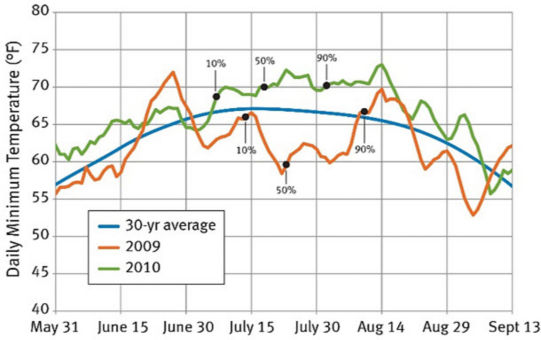
Figure 1. Daily minimum temperatures (7-day moving average) for Des Moines, IA, in 2009 and 2010, and 30-yr average minimum daily temperatures (1981-2010). Approximate dates of 10%, 50%, and 90% silking in Iowa in 2009 and 2010 based on USDA crop progress reports.
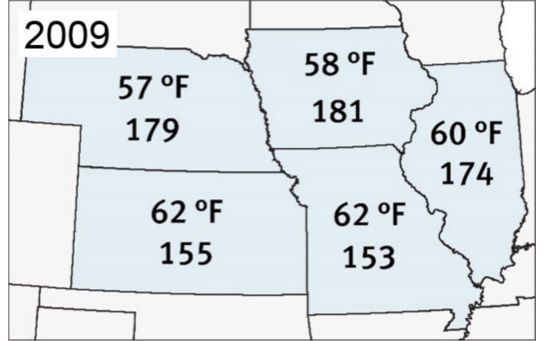
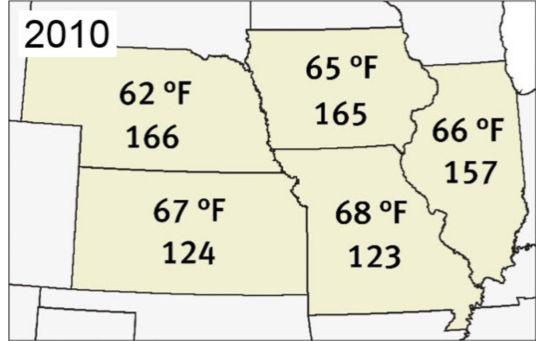
Figure 2. Average minimum temperatures experienced in July-August of 2009 (top) and 2010 (above) and average yields (bu/acre) in Iowa, Illinois, Missouri, Kansas and Nebraska. Data from NCEI NOAA, USDA NASS.
ICM News
by Roger Elmore, Department of Agronomy
"October corn yield forecast for Iowa dropped to 169 bushels per acre, a significant reduction from the August and September forecasts of 179 bushels per acre (see October USDA-NASS forecast). If realized, 2010 yields will rank sixth among the last seven years, higher only than the yields of 2006 (166 bushels per acre). Numerous published and anecdotal yield reports substantiate lower than expected yields this year.
In previous 2010 Integrated Crop Management News articles, we've addressed 2010 conditions and the possibility of reduced yields resulting from rapid crop development following silking (see September 28 article). Statewide Growing Degree Day accumulations were 116 percent of normal during most of the seed fill period — silk to dent — this year."
Table 2. Effect of temperature on grain fill duration, grain weight per plant and kernel number (Badu-Apraku et al., 1983).

So are we going to have heat fill this year?
Yes! The warmer these temperatures are, the greater the magnitude.
Temperatures compared to average for days 3-7 below
Mostly heat/reds.
https://www.wpc.ncep.noaa.gov/medr/medr_mean.shtml
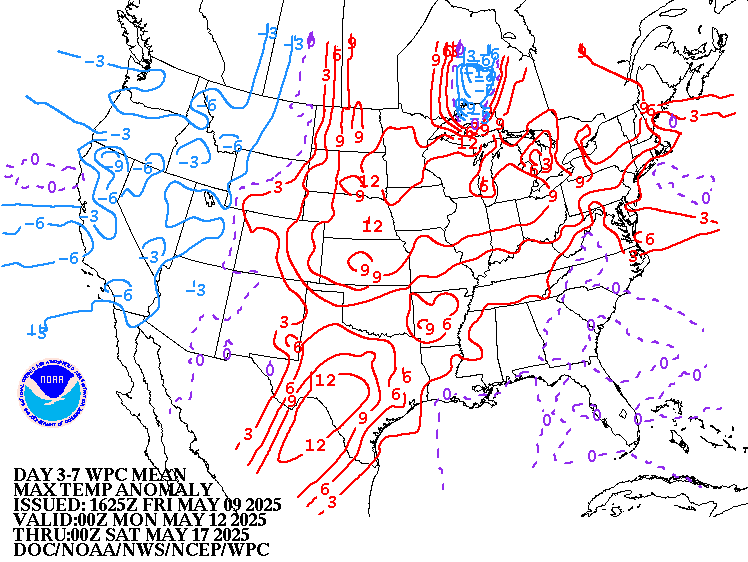
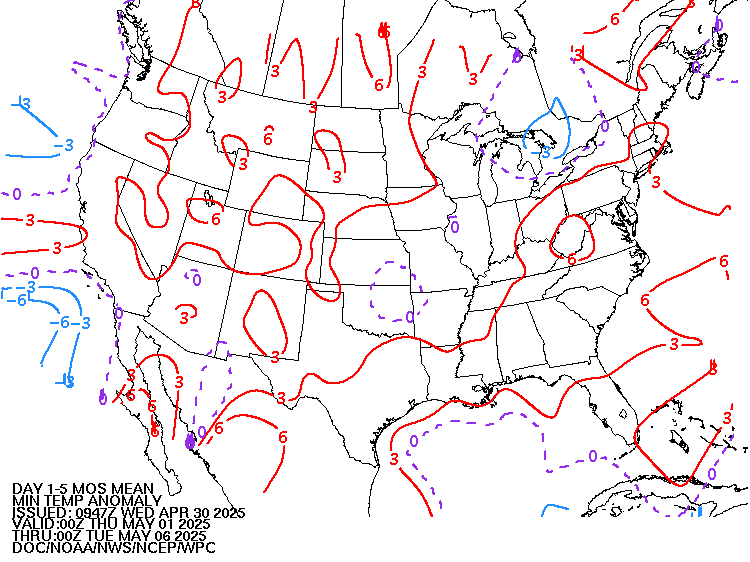
Extended forecasts below
Temperature Probability
| the 8-14 day outlooks ArchivesAnalogsLines-Only FormatGIS Data | |
Temperature Probability | |
 | |
The knowledge I learn from everyone here is incredible. Thanks for the information!
YW Grant. Your contributions are greatly appreciated too.